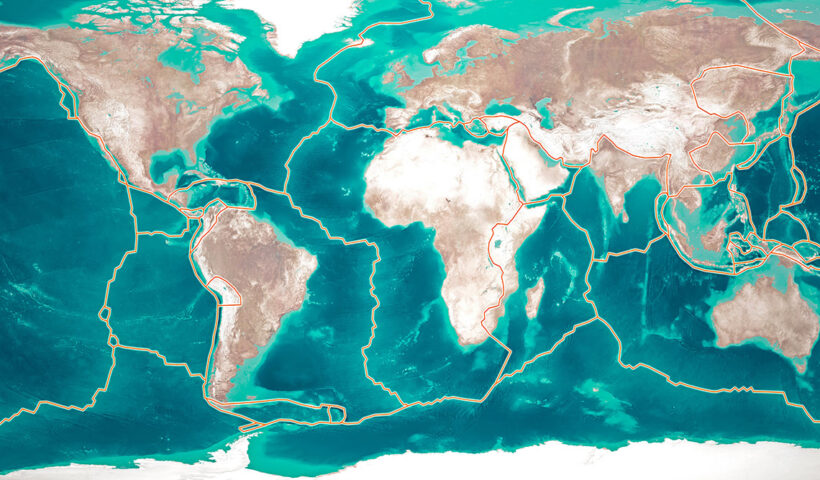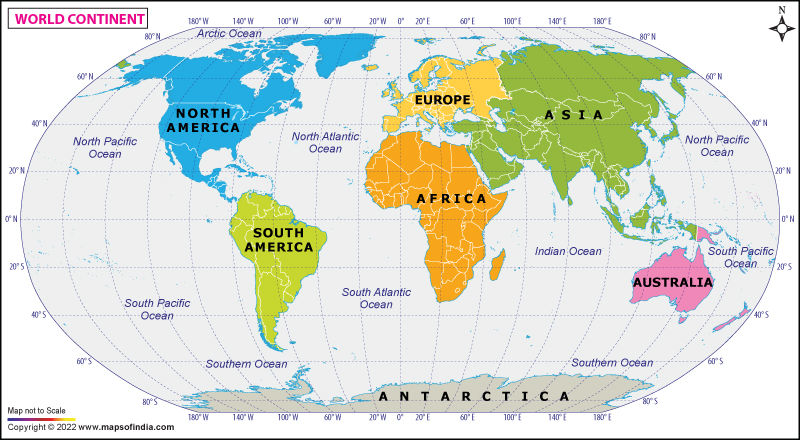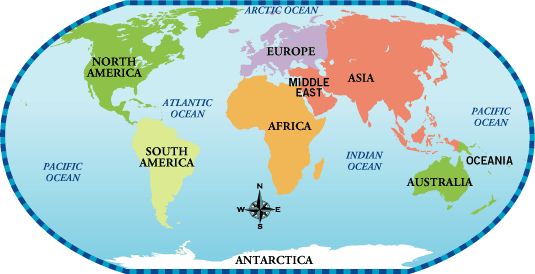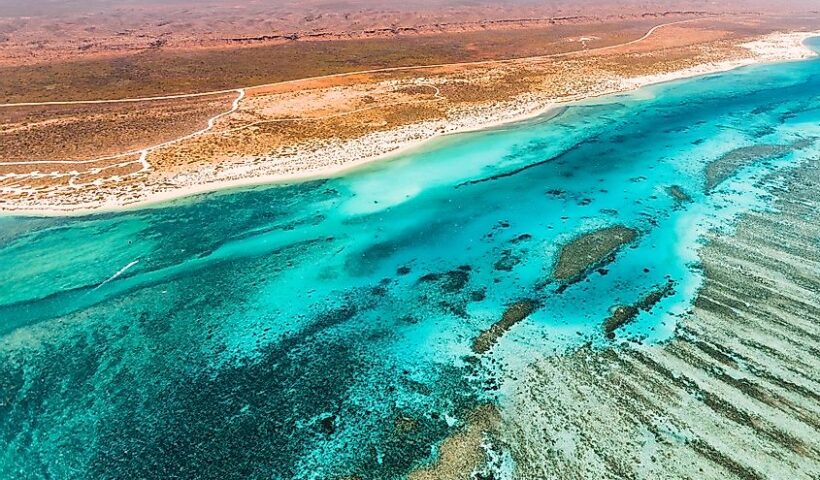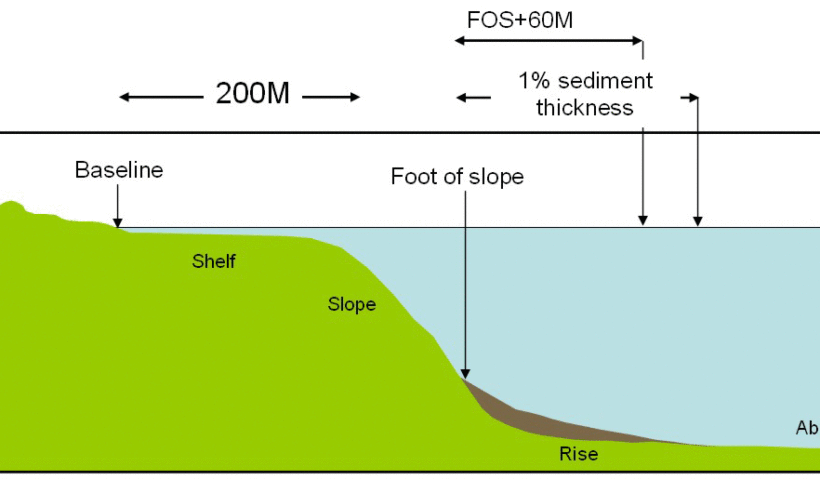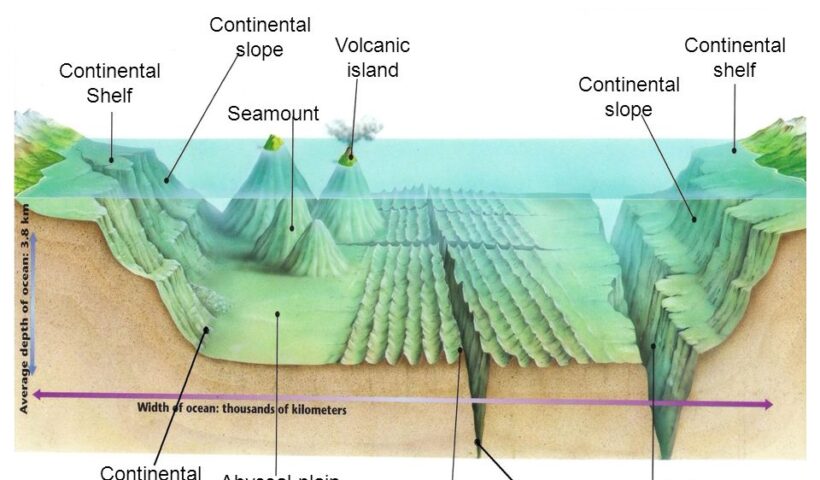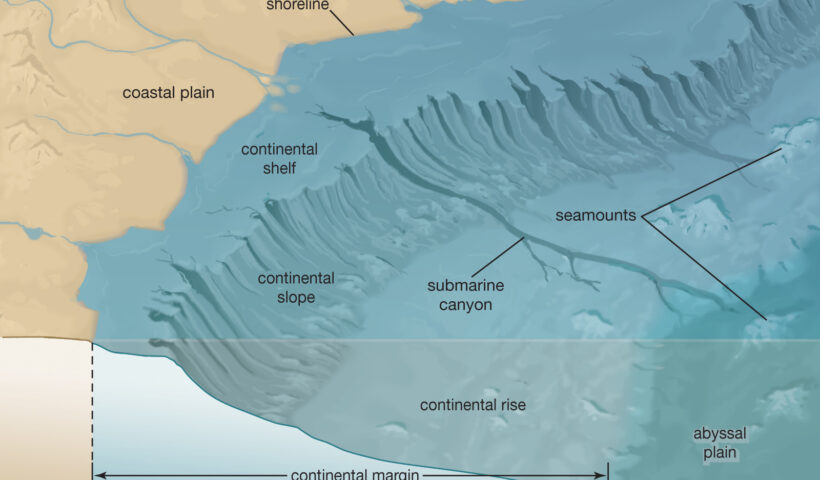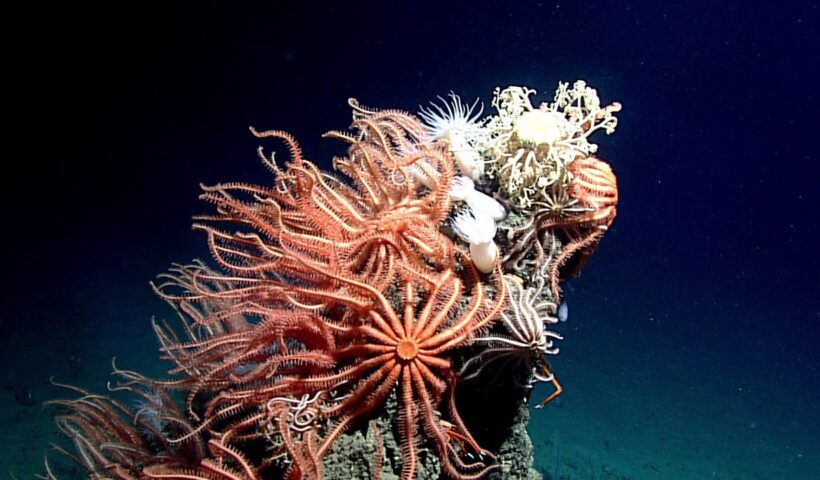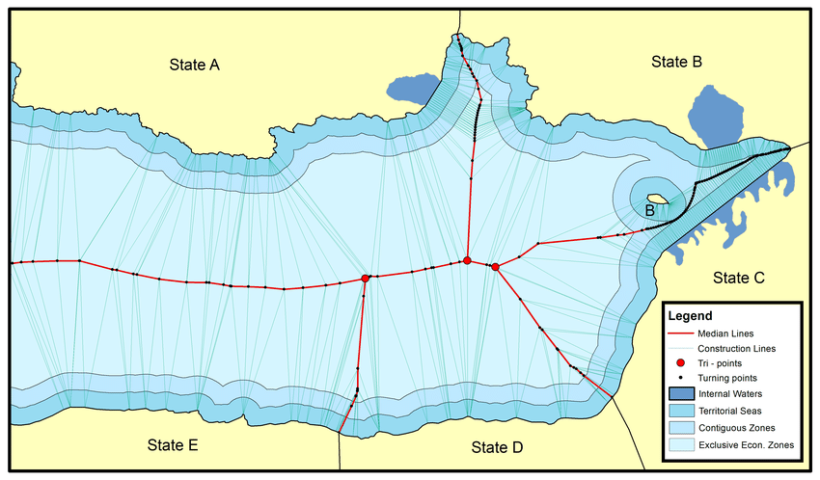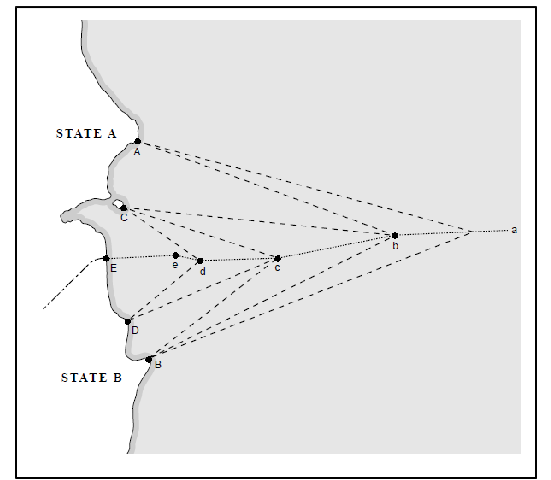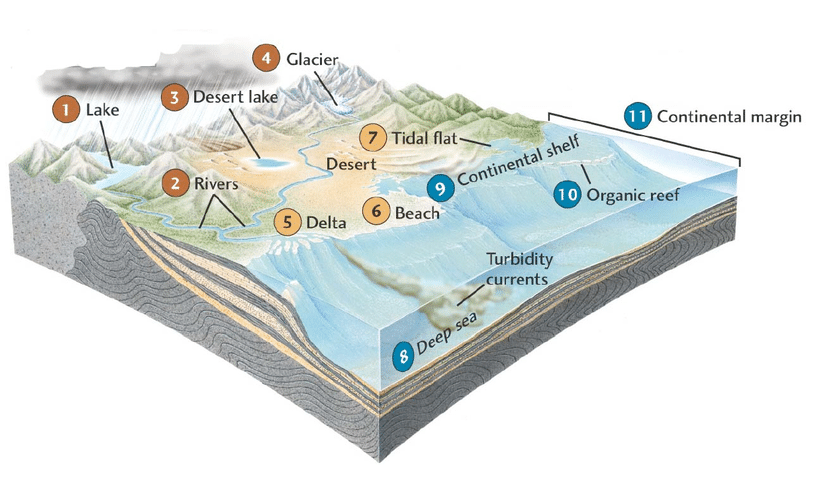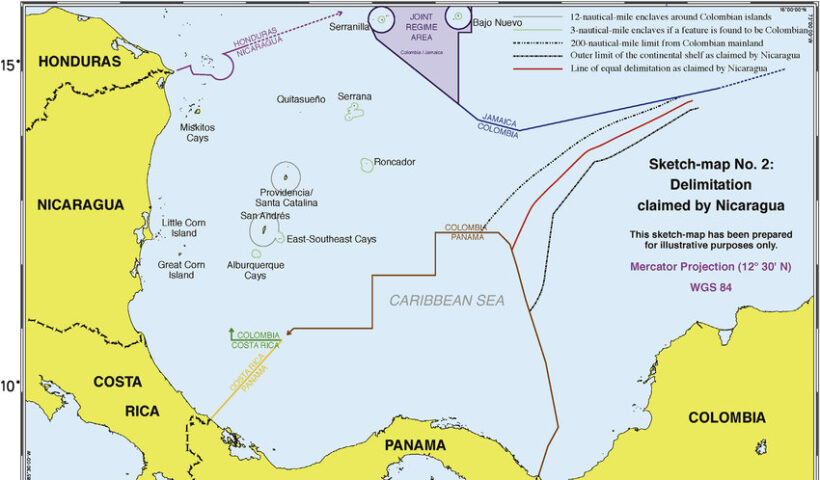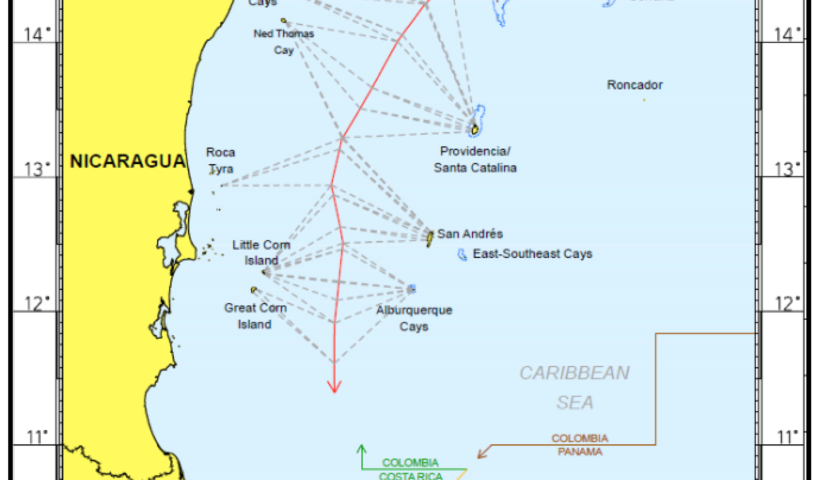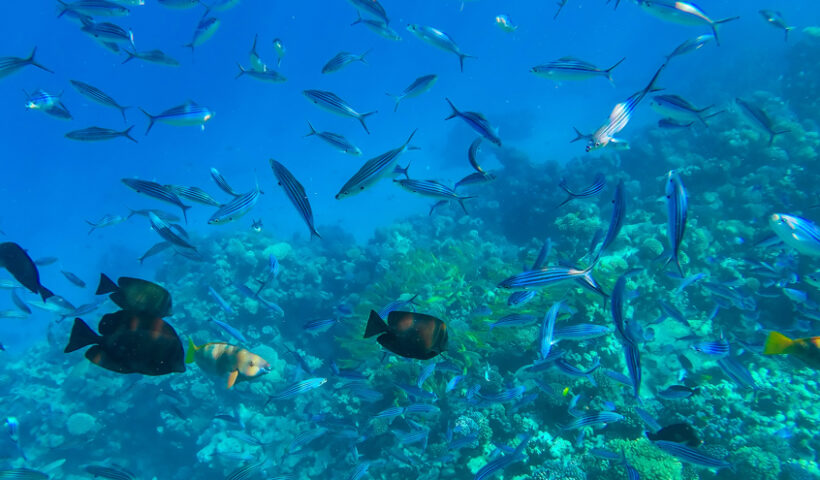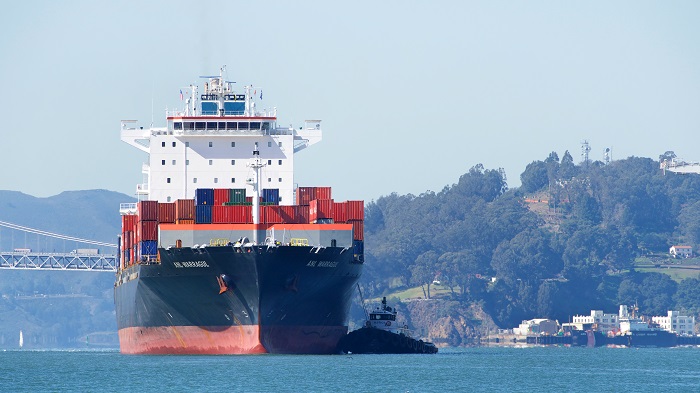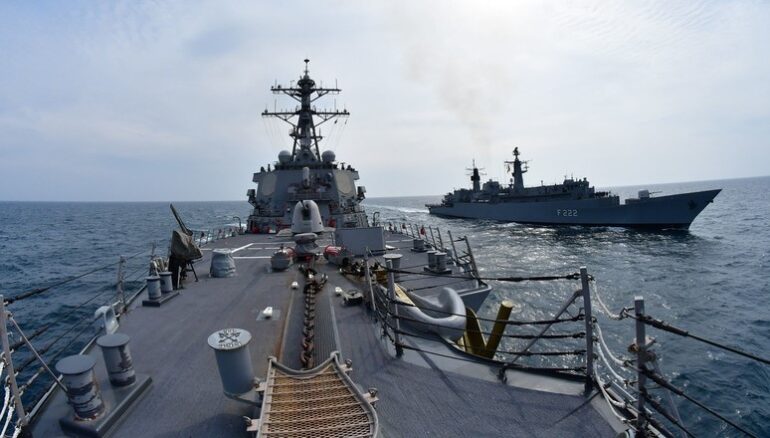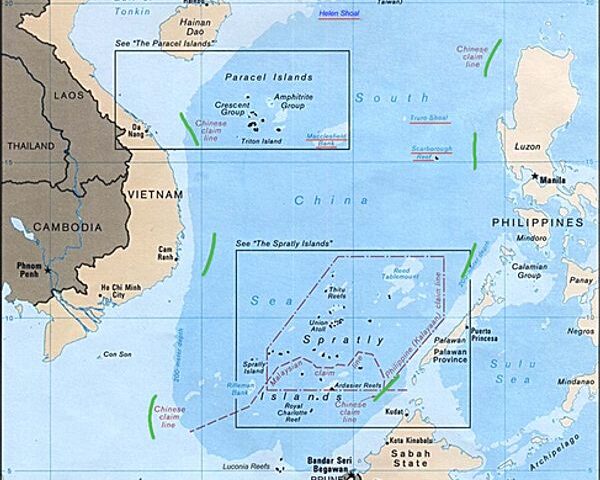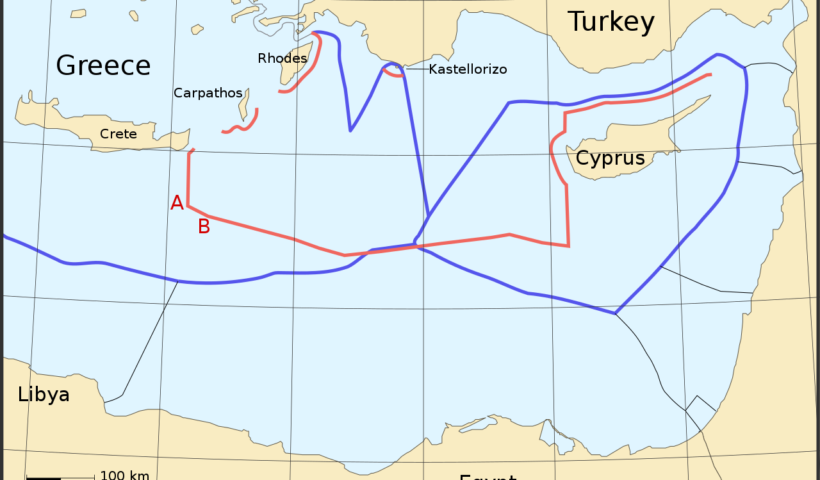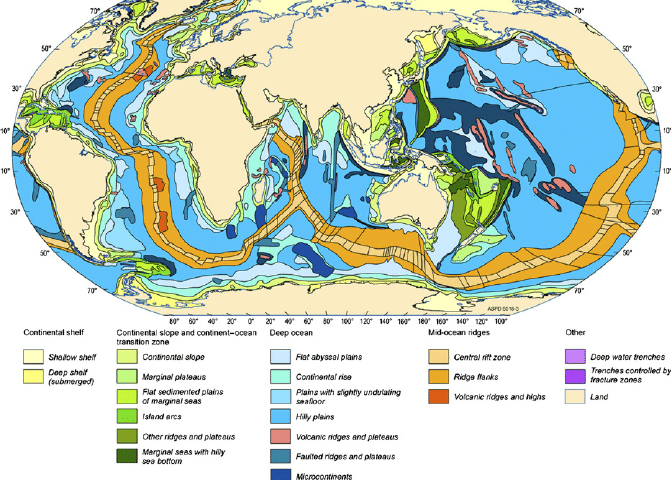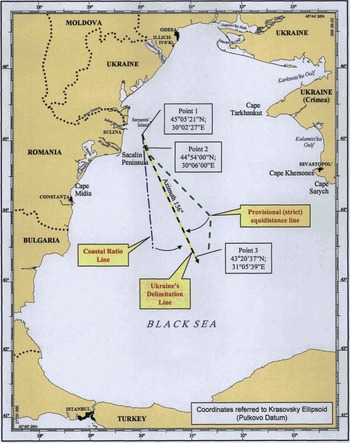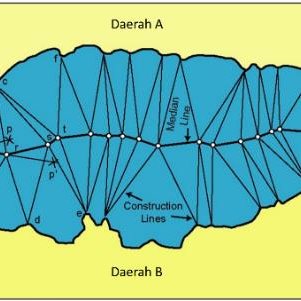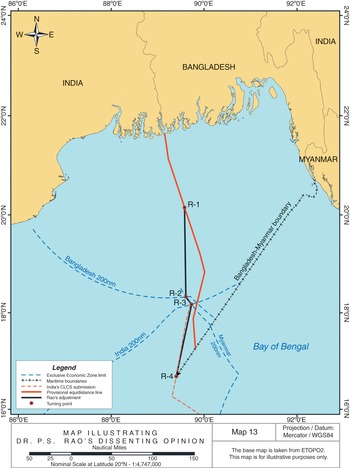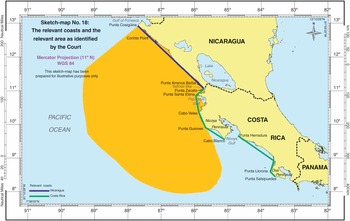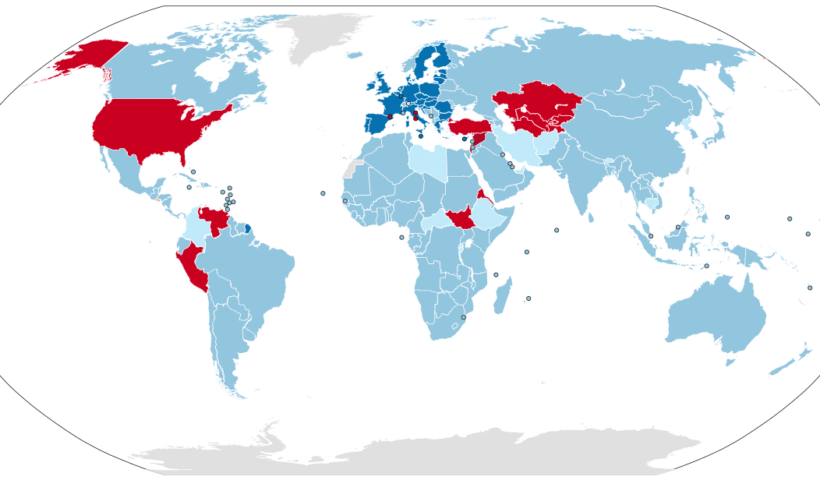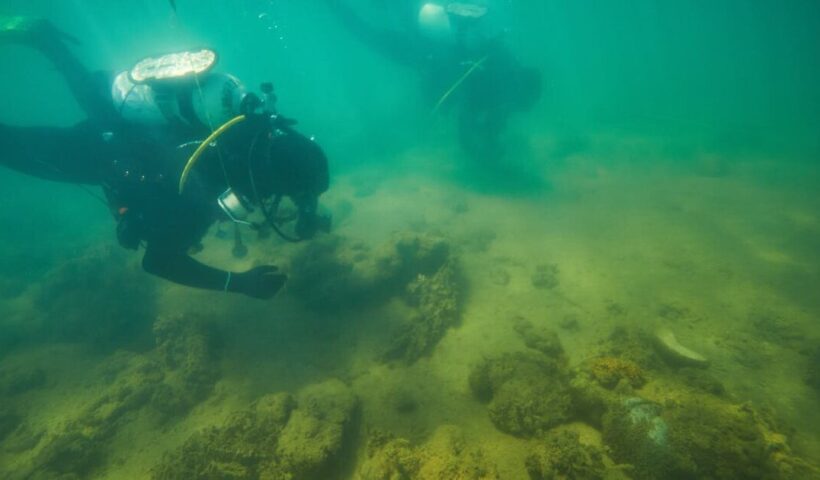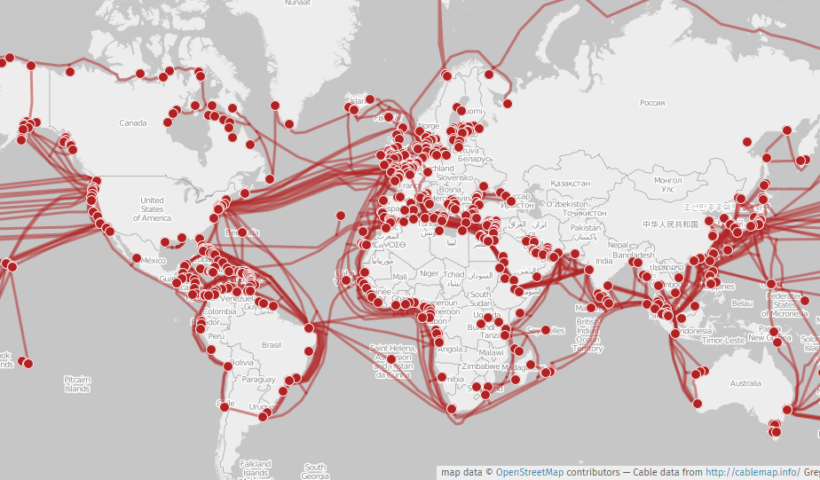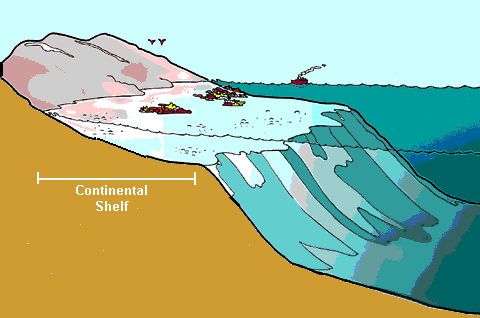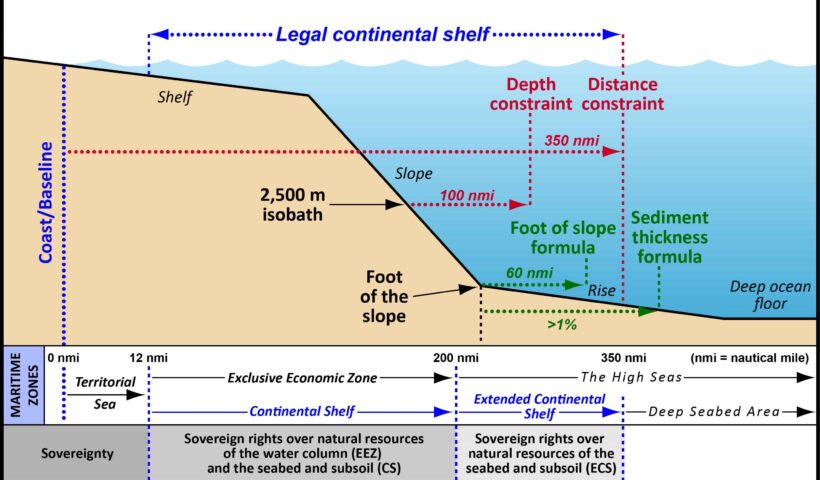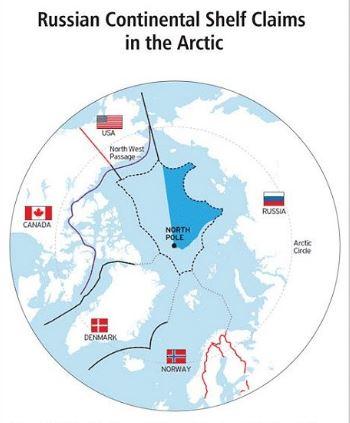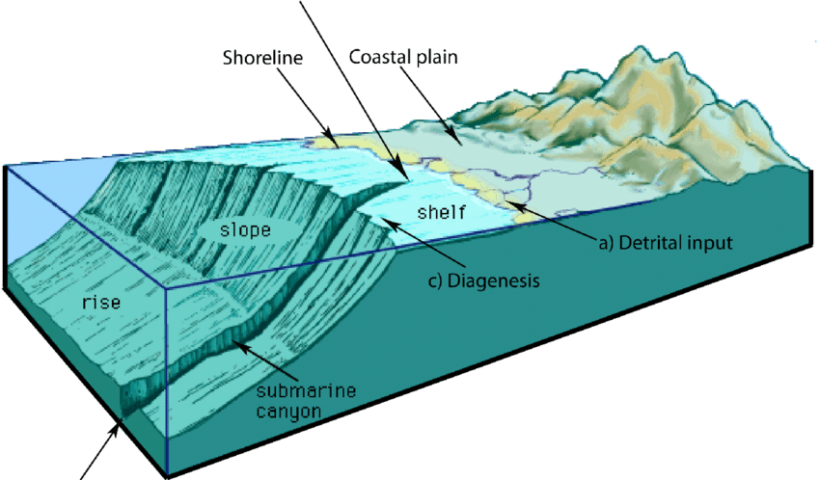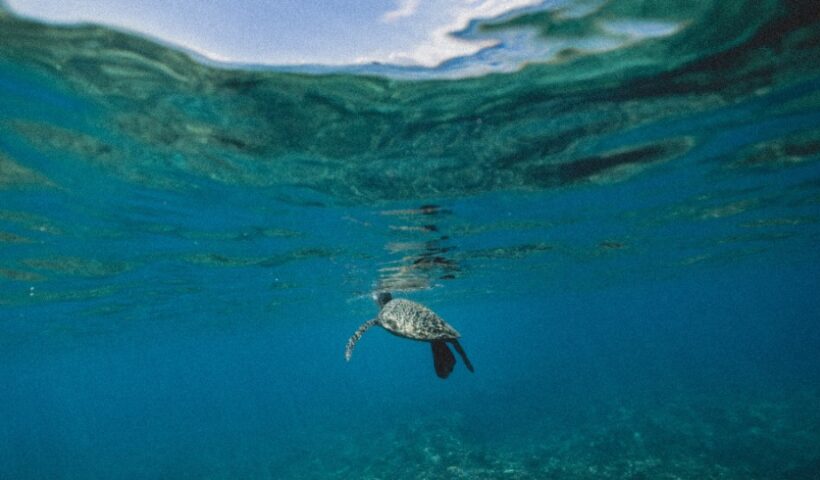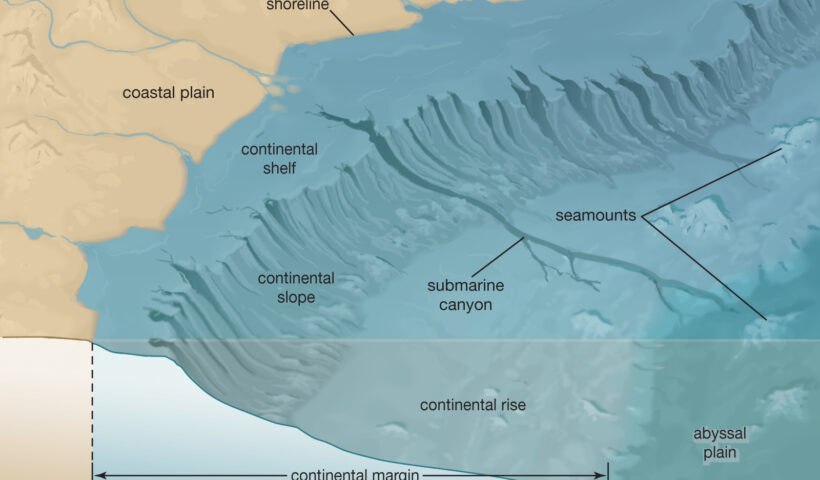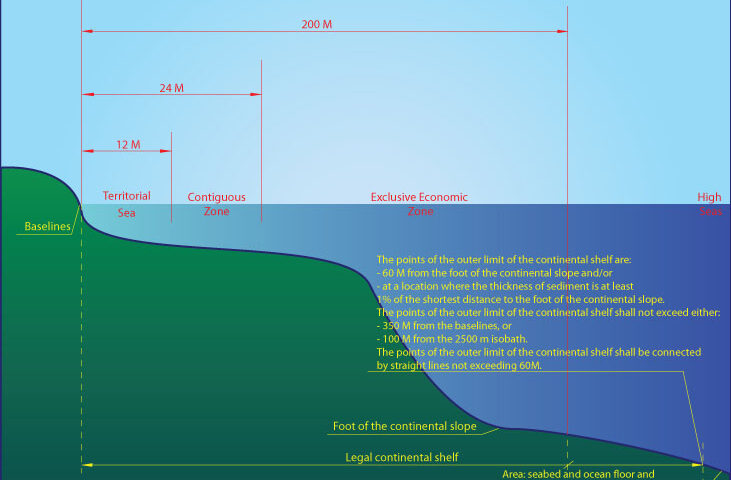The division of the world into land and sea seems so
natural and timeless that it is hard to imagine it any other
way. Yet the very existence of continents and oceans is unique to
planet Earth, and their behaviour is even more remarkable.
Early in the 20th century, a German meteorologist named
Alfred Wegener noted the extraordinary way coastlines of
continents seemed to match across the oceans, like the separated
pieces of a vast jigsaw. He suggested that this was because the
continents were once joined together and the oceans between
them opened up as they split apart and drifted around the
world over many millions of years.
Category: continental shelf legal aspects
What Makes a Continent a Continent?
According to a 2017 paper published in the Geological Society of America’s journal, GSA Today, “The ‘Glossary of Geology’ defines a continent as ‘one of the Earth’s major landmasses, including both dry land and continental shelves.’ It is generally agreed that continents have all the following attributes: (1) high elevation relative to regions floored by oceanic crust; (2) a broad range of siliceous igneous, metamorphic and sedimentary rocks; (3) thicker crust and lower seismic velocity structure than oceanic crustal regions; and (4) well-defined limits around a large enough area to be considered a continent rather than a microcontinent or continental fragment… To our knowledge, the last point — how ‘major’ a piece of continental crust has to be to be called a continent — is almost never discussed.”
View More What Makes a Continent a Continent?what is the meaning of the continents in geography and law
The seven continents that make up the world’s land mass are, from largest to smallest: Asia, Africa, North America, South America, Antarctica, Europe, and Australia. Only 29 percent of the Earth’s surface is land. The percentage area of each continent is shown here.
View More what is the meaning of the continents in geography and lawThe Truman Proclamation, 1945 (Proclamation 2667—Policy of the United States With Respect to the Natural Resources of the Subsoil and Sea Bed of the Continental Shelf)
U.S. President Harry S. Truman’s executive order on September 28, 1945, proclaiming that the resources on the continental shelf contiguous to the United States belonged to the United States. This was a radical departure from the existing approach, under which the two basic principles of the law of the sea had been a narrow strip of coastal waters under the exclusive sovereignty of the coastal state and an unregulated area beyond that known as the high seas. The speed at which Truman’s continental shelf concept was recognized through emulation or acquiescence led Sir Hersch Lauterpacht to declare in 1950 that it represented virtually “instant custom.”
View More The Truman Proclamation, 1945 (Proclamation 2667—Policy of the United States With Respect to the Natural Resources of the Subsoil and Sea Bed of the Continental Shelf)what is the meaning of “Fringing reef” in law of the sea, LOSC and customary international law
As used in UNCLOS Articles 6 and 47(7), “fringing reef ” means a reef attached directly to the shore or continental land mass, or located in their immediate vicinity.. what is the meaning of “Fringing reef” in law of the sea, LOSC and customary international law, Fringing reef, How a fringing reef is formed?, How long does it take for a fringing reef to form?, What is the brief description of fringing reefs?, what is the meaning of “Fringing reef” in law of the sea?, Why is fringing reef important?
View More what is the meaning of “Fringing reef” in law of the sea, LOSC and customary international lawwhat is the meaning of “Foot of the continental slope” in law of the sea, LOSC and customary international law
As used in UNCLOS Article 76, “foot of the continental slope” means the point where the continental slope meets the continental rise or, if there is no rise, the deep ocean floor. what is the meaning of “Foot of the continental slope” in law of the sea, LOSC and customary international law, continental margin, continental slope, foot of the continental slope, How far out is the continental slope?, what is the meaning of Foot of the continental slope?, Where is the continental slope?
View More what is the meaning of “Foot of the continental slope” in law of the sea, LOSC and customary international lawwhat is the meaning of “Equidistance line; equidistant line; median line” in law of the sea, LOSC and customary international law
In UNCLOS analysis, an “equidistance line,” synonymous with “equidistant line” or “median line,” means a line every point of which is equally distant from the nearest points on the baselines of two States. what is the meaning of “Equidistance line; equidistant line; median line” in law of the sea, LOSC and customary international law, equidistance line, equidistant line, How are maritime boundaries defined?, median line, What is a single maritime boundary?, What is median line principle?, What is unclos and its purpose?
View More what is the meaning of “Equidistance line; equidistant line; median line” in law of the sea, LOSC and customary international lawwhat is the meaning of “Continental slope” in law of the sea, LOSC and customary international law
“Continental slope” or “slope,” as used in UNCLOS Article 76, means that part of the continental margin lying between the continental shelf and the continental rise. The continental slope may not be uniform or abrupt and may locally take the form of terraces. The continental slope’s gradients are usually greater than 1.5 degrees.. what is the meaning of “Continental slope” in law of the sea, LOSC and customary international law, continental shelf, continental slope, How is a continental slope formed?, slope, What is continental slope?, What is the slope of the continental shelf?, Where is the continental slope?
View More what is the meaning of “Continental slope” in law of the sea, LOSC and customary international lawwhat is the meaning of “Continental rise” in law of the sea, LOSC and customary international law
As used in UNCLOS Articles 76(3) and 76(6), “rise,” i.e., the “continental rise,” is a submarine feature which is that part of the continental margin lying between the continental slope and the deep ocean floor. It usually has a gradient of 0.5 degrees or less and a generally smooth surface consisting of sediment.. what is the meaning of “Continental rise” in law of the sea, LOSC and customary international law, continental rise, continental slope, foot of the continental slope, UNCLOS, What is a continental rise in geology?, What is the depth of the continental rise?, What is the difference between continental slope and continental rise?, what is the meaning of “Continental rise” in law of the sea?
View More what is the meaning of “Continental rise” in law of the sea, LOSC and customary international lawwhat is the meaning of “Common heritage of mankind or common heritage of humankind” in law of the sea, LOSC and customary international law
what is the meaning of “Common heritage of mankind or common heritage of humankind” in law of the sea, LOSC and customary international law, common heritage of humankind, Common Heritage of Mankind, what is the meaning of “Common heritage of mankind?
View More what is the meaning of “Common heritage of mankind or common heritage of humankind” in law of the sea, LOSC and customary international lawwhat is the meaning of “Coastal State” in law of the sea, LOSC and customary international law
“Coastal State” is a State from whose coast or baselines the breadth of the territorial sea is measured, those baselines being determined in accordance with UNCLOS Articles 5–7, 9–10 and 47. what is the meaning of “Coastal State” in law of the sea, LOSC and customary international law, coastal State, coastal State obligations with respect to innocent passage, land-locked State, What is a coastal state under Unclos?, What is coastal state control?, What is the coastal state?, what is the meaning of “Coastal State” in law of the sea, Where is the coastal state?
View More what is the meaning of “Coastal State” in law of the sea, LOSC and customary international lawwhat is the meaning of “Adjacent coasts” in law of the sea, LOSC and customary international law
As used in UNCLOS Articles 15, 74(1) and 83, “adjacent coasts” means coasts lying on either side of the land boundary between two adjoining States. States may have adjacent coasts under UNCLOS even if they do not share a common land boundary. what is the meaning of “Adjacent coasts” in law of the sea, LOSC and customary international law, adjacent coasts, jus cogens norms, UNCLOS, what is the meaning of “Adjacent coasts” in law of the sea
View More what is the meaning of “Adjacent coasts” in law of the sea, LOSC and customary international lawDefinitions Relating to the Continental Shelf on the LOSC and customary international law
Definitions Relating to the Continental Shelf on the LOSC and customary international law, adjacent coasts, basepoint or point, chart, continental rise, continental shelf, continental slope, deep ocean floor, foot of the continental slope, geodetic data, isobath, latitude, Limits of the Continental Shelf, line of delimitation, LOS Committee, oceanic ridge, sedimentary rock, submarine elevation, UNCLOS, What are the characteristics of the continental shelf?, What does continental slope mean?, What extended continental shelf?, What is continental shelf limit?, What is the importance of continental shelf?, What is the largest continental shelf?, Where is the continental shelf?
View More Definitions Relating to the Continental Shelf on the LOSC and customary international lawLegal Nature of Maritime Delimitation in law of the sea and customary international law
Maritime delimitation may be defined as the process of establishing lines separating the spatial ambit of coastal State jurisdiction over maritime space where the legal title overlaps with that of another State. This definition calls for five comments:… Legal Nature of Maritime Delimitation in law of the sea and customary international law, a just and equitable share, continental shelf, délimitation constitutive, délimitation déclarative, EEZ, geographical co-ordinates, Gulf of Maine case, internal waters, International Sea-Bed Authority, maritime delimitation, North Sea Continental Shelf cases, provisional delimitation line, territorial sea, What are the stages of maritime boundary?, What is a single maritime boundary?, What is delimited boundary?, What is maritime space?, What is median line principle?, What is the difference between demarcation and delimitation?, Which law delimits world seas?
View More Legal Nature of Maritime Delimitation in law of the sea and customary international lawDelimitation of the Continental Shelf Beyond 200 Nautical Miles in law of the sea and customary international law
The delimitation of the continental shelf beyond 200 nautical miles is a comparatively new subject in the law of maritime delimitation. In this regard, three issues need further consideration: (i) entitlements to the continental shelf beyond 200 nautical miles, (ii) the relationship between the CLCS and an international court or tribunal, and (iii) the methodology.. Delimitation of the Continental Shelf Beyond 200 Nautical Miles in law of the sea and customary international law, Bangladesh/India case, Bangladesh/Myanmar case, continental shelf, Delimitation of the Continental Shelf, Delimitation of the Continental Shelf Beyond 200 Nautical Miles, Ghana/Côte d’Ivoire cases, LOSC, maritime delimitation, What are the characteristics of the continental shelf?, What does continental slope mean?, What extended continental shelf?, What is continental shelf limit?, What is the importance of continental shelf?, What is the largest continental shelf?, Where is the continental shelf?
View More Delimitation of the Continental Shelf Beyond 200 Nautical Miles in law of the sea and customary international lawJudicial Creativity in the Law of Maritime Delimitation
Judicial Creativity in the Law of Maritime Delimitation, Anglo-French Continental Shelf Arbitration, Gulf of Maine cases, maritime delimitation, opinio juris, What are the stages of maritime boundary?, What is a single maritime boundary?, What is delimited boundary?, What is maritime space?, What is median line principle?, What is the difference between demarcation and delimitation?, Which law delimits world seas?
View More Judicial Creativity in the Law of Maritime DelimitationEnvironmental Factors as a RELEVANT CIRCUMSTANCES in delimitation process in law of the sea and customary international law
While protection of the marine environment is a matter of important concern, the existing case law seems to pay little attention to environmental concern in the context of maritime delimitations. In the Gulf of Maine case, the United States relied on environmental factors to justify an equitable maritime boundary. However, the Chamber of the ICJ discarded the ecological criterion primarily because such a criterion was inconsistent with the ‘neutral criteria’ for drawing a single maritime boundary. Usually environmental considerations have played little, if any, role in agreements concerning maritime delimitations.. Environmental Factors as a RELEVANT CIRCUMSTANCES in delimitation process in law of the sea and customary international law, delimitation process, Environmental Factors, equitable maritime boundary, Gulf of Maine case, marine environment, maritime boundary, relevant circumstances
View More Environmental Factors as a RELEVANT CIRCUMSTANCES in delimitation process in law of the sea and customary international lawNavigational Factors as a RELEVANT CIRCUMSTANCES in delimitation process in law of the sea and customary international law
Navigational Factors as a RELEVANT CIRCUMSTANCES in delimitation process in law of the sea and customary international law, delimitation process, Eritrea/Yemen Arbitration, Guyana/Suriname case, LOSC, Navigational Factors, navigational interests, relevant circumstances, territorial seas
View More Navigational Factors as a RELEVANT CIRCUMSTANCES in delimitation process in law of the sea and customary international lawSecurity Interests as a RELEVANT CIRCUMSTANCES in delimitation process in law of the sea and customary international law
Security Interests as a RELEVANT CIRCUMSTANCES in delimitation process in law of the sea and customary international law, Black Sea cases, delimitation process, Greenland/Jan Mayen case, Libya/Malta case, relevant circumstances, security factors, Security Interests
View More Security Interests as a RELEVANT CIRCUMSTANCES in delimitation process in law of the sea and customary international lawHistoric Title and Historic Rights as a RELEVANT CIRCUMSTANCES in delimitation process in law of the sea and customary international law
Historic Title and Historic Rights as a RELEVANT CIRCUMSTANCES in delimitation process in law of the sea and customary international law, continental shelf delimitation, delimitation process, EEZ, EEZ delimitation, historic rights, Historic Title, LOSC, maritime areas, maritime delimitation, relevant circumstances, South China Sea Arbitration
View More Historic Title and Historic Rights as a RELEVANT CIRCUMSTANCES in delimitation process in law of the sea and customary international lawConduct of the Parties as a RELEVANT CIRCUMSTANCES in delimitation process in law of the sea and customary international law
Conduct of the Parties as a RELEVANT CIRCUMSTANCES in delimitation process in law of the sea and customary international law, Conduct of the Parties, delimitation process, maritime delimitation, Tunisia/ Libya judgment
View More Conduct of the Parties as a RELEVANT CIRCUMSTANCES in delimitation process in law of the sea and customary international lawEconomic Factors as a RELEVANT CIRCUMSTANCES in delimitation process in law of the sea and customary international law
Economic Factors as a RELEVANT CIRCUMSTANCES in delimitation process in law of the sea and customary international law, Cameroon/Nigeria case, common deposit clause, continental shelf, Economic Factors, Eritrea/Yemen Arbitration, Greenland/Jan Mayen case, Gulf of Maine judgment, maritime delimitation, mineral deposit clause, natural resources
View More Economic Factors as a RELEVANT CIRCUMSTANCES in delimitation process in law of the sea and customary international lawPresence of Third States as a RELEVANT CIRCUMSTANCES in delimitation process in law of the sea and customary international law
Presence of Third States as a RELEVANT CIRCUMSTANCES in delimitation process in law of the sea and customary international law, Nicaragua/Colombia case, Presence of Third States, principal relevant circumstances in the law of maritime delimitation
View More Presence of Third States as a RELEVANT CIRCUMSTANCES in delimitation process in law of the sea and customary international lawGeological and Geomorphological Factors as a RELEVANT CIRCUMSTANCES in delimitation process in law of the sea and customary international law
Geological and Geomorphological Factors as a RELEVANT CIRCUMSTANCES in delimitation process in law of the sea and customary international law, continental shelf, delimitation process, Geological, Geomorphological, relevant circumstances
View More Geological and Geomorphological Factors as a RELEVANT CIRCUMSTANCES in delimitation process in law of the sea and customary international lawPresence of Islands as a RELEVANT CIRCUMSTANCES in delimitation process in law of the sea and customary international law
Presence of Islands as a RELEVANT CIRCUMSTANCES in delimitation process in law of the sea and customary international law, 12-nautical-mile, Black Sea case, continental shelf, delimitation process, geographic realities, ICJ jurisprudence, ITLOS, maritime boundary, maritime delimitation, Nicaragua/ Colombia case, Nicaragua/Honduras case, Presence of Islands, Qatar/Bahrain case, relevant circumstances
View More Presence of Islands as a RELEVANT CIRCUMSTANCES in delimitation process in law of the sea and customary international lawBaselines or basepoints as a RELEVANT CIRCUMSTANCES in delimitation process in law of the sea and customary international law
Baselines or basepoints as a RELEVANT CIRCUMSTANCES in delimitation process in law of the sea and customary international law, Baltic, baselines, basepoint, basepoints, delimitation process, equidistance method, Eritrea/Yemen case, Libya/Malta case, LOSC, Maritime Boundary Agreement between the United States and Cuba, maritime delimitations, relevant circumstances, straight-baselines system
View More Baselines or basepoints as a RELEVANT CIRCUMSTANCES in delimitation process in law of the sea and customary international lawProportionality as a RELEVANT CIRCUMSTANCES in delimitation process in law of the sea and customary international law
Proportionality as a RELEVANT CIRCUMSTANCES in delimitation process in law of the sea and customary international law, adjacent coasts, Anglo-French Continental Shelf case, delimitation process, Equitable Principles, existence of particular coastal configurations, ITLOS, maritime delimitation, North Sea Continental Shelf cases, Proportionality, quasi-equal length of the relevant coasts, relevant circumstances
View More Proportionality as a RELEVANT CIRCUMSTANCES in delimitation process in law of the sea and customary international lawConfiguration of Coasts as a RELEVANT CIRCUMSTANCES in delimitation process in law of the sea and customary international law
Configuration of Coasts as a RELEVANT CIRCUMSTANCES in delimitation process in law of the sea and customary international law, Bangladesh/India Arbitration, Bangladesh/Myanmar case, Configuration of Coasts, delimitation process, equidistance line, equidistance method, geographical factors, Guinea/ Guinea-Bissau case, ITLOS, Libya/Malta judgment, line grosso modo, macrogeography, manifestly concave, maritime delimitation, North Sea Continental Shelf cases, opposite and adjacent coasts, provisional equidistance line, relevant circumstances
View More Configuration of Coasts as a RELEVANT CIRCUMSTANCES in delimitation process in law of the sea and customary international lawTREATY LAW CONCERNING MARITIME DELIMITATION
TREATY LAW CONCERNING MARITIME DELIMITATION, 1958 Convention on the Continental Shelf, 1977 Anglo-French Continental Shelf case, continental shelf, Delimitation of the contiguous zone, delimitation of the territorial seas, determining the applicable law, EEZ, equidistance (median line), Equitable Principles, equitable solution, inequitable results, LOSC, method of delimitation, special circumstances, TSC, What are the stages of maritime boundary?, What is a single maritime boundary?, What is delimited boundary?, What is maritime space?, What is median line principle?, What is the difference between demarcation and delimitation?, Which law delimits world seas?
View More TREATY LAW CONCERNING MARITIME DELIMITATIONProtection of Archaeological and Historical Objects Found Within the Continental Shelf in the law of the sea and customary international law
It has been said that ‘the greatest museum of human civilization lies on the seabed’. Owing to the development of underwater archaeology as a scientific discipline, the protection of underwater cultural heritage has begun to emerge as a crucial issue in international law. Thus this section addresses two key instruments on this subject: the LOSC and the Convention on the Protection of Underwater Cultural Heritage adopted by UNESCO on 2 November 2001 (hereinafter the UNESCO Convention). . Protection of Archaeological and Historical Objects Found Within the Continental Shelf in the law of the sea and customary international law, Archaeological objects, continental shelf, Convention on the Protection of Underwater Cultural Heritage, EEZ, enclosed sea, Historical Objects, LOSC, semi-enclosed sea, underwater cultural heritage
View More Protection of Archaeological and Historical Objects Found Within the Continental Shelf in the law of the sea and customary international lawFreedoms of Third States on the continental shelf of other states based on the law of the sea and customary international law
(a) Submarine Cables and Pipelines With respect to the freedom of use on the continental shelf, Article 79(1) stipulates that all States are entitled to lay submarine cables and pipelines on the continental shelf.
In practice, submarine cables are divided into two main categories: submarine power cables used to transmit electricity, and submarine communication cables used to transmit data communications traffic. At present, the overwhelming majority of the world’s international telecommunication relies on submarine fibre-optic cables, and submarine telecommunication cables have become a critical global communications infrastructure. The oil and gas pipeline is also of crucial importance as a reliable means of energy transport.
Freedoms of Third States on the continental shelf of other states based on the law of the sea and customary international law, continental shelf, EEZ, High seas, LOSC, marine pollution, Pipelines, Submarine Cables, Superjacent Waters
The Sovereign Rights of the Coastal State Over the Continental Shelf in law of the sea and customary international law
The coastal State exercises sovereign rights over the continental shelf for the purpose of exploring and exploiting its natural resources in accordance with Article 77(1). The principal features of sovereign rights can be summarised in six points:…The Sovereign Rights of the Coastal State Over the Continental Shelf in law of the sea and customary international law, coastal State, continental shelf, EEZ, inherent rights, LOSC, natural resources, non-living resources, Non-natural resources, Sovereign Rights
View More The Sovereign Rights of the Coastal State Over the Continental Shelf in law of the sea and customary international lawProcedures to Establish the Outer Limits of the Continental Shelf on the law of the sea and LOSC
Procedures to Establish the Outer Limits of the Continental Shelf on the law of the sea and LOSC, Commission on the Limits of the Continental Shelf, continental shelf, continental shelf in international law, continental shelf meaning, continental shelf unclos, geodetic data, LOSC, Outer Limits of the Continental Shelf, the continental shelf and its outer delimitation, The Establishment of the Outer Limits of the Continental Shelf, What are the limits of continental shelf?, What does the continental shelf of a coastal state comprise?, What is continental shelf in international law?, What is continental shelf theory?, What is the outer edge or ending point of the continental shelf?
View More Procedures to Establish the Outer Limits of the Continental Shelf on the law of the sea and LOSCThe Commission on the Limits of the Continental Shelf, duties, authorities and works
As we shall discuss later, the coastal State intending to claim a continental shelf beyond 200 nautical miles is required to submit information on the limits of the shelf to the Commission. The Commission consists of twenty-one members who shall be experts in the field of geology, geophysics or hydrography. The members of the Commission are to be elected by States Parties to the LOSC from among their nationals, having due regard to the need to ensure equitable geographical representation, and they shall serve in their personal capacities in accordance with Article 2(1) of Annex II…The Commission on the Limits of the Continental Shelf, duties, authorities and works, Commission on the Limits of the Continental Shelf, continental shelf, LOSC, What are the characteristics of the continental shelf?, What does continental slope mean?, What extended continental shelf?, What is continental shelf limit?, What is the importance of continental shelf?, What is the largest continental shelf?, Where is the continental shelf?
View More The Commission on the Limits of the Continental Shelf, duties, authorities and worksCriteria for Determining the Outer Limits of the Continental Shelf Beyond 200 Nautical Miles(extended continental shelf (ECS))
Where the outer edge of the continental margin extends beyond 200 nautical miles, the limit of the continental shelf is to be determined on the basis of the geological criteria set out by Article 76(4). This provision contains two criteria for fixing the seaward limit of the continental shelf.
View More Criteria for Determining the Outer Limits of the Continental Shelf Beyond 200 Nautical Miles(extended continental shelf (ECS))what is the meaning of CONTINENTAL SHELF on the law of the sea and customary international law?
In light of the dictum of the Court and Article 76 of the LOSC, it may be argued that currently the distance criterion is the legal title over the continental shelf up to 200 nautical miles, and the natural prolongation offers legal title over the shelf beyond 200 nautical miles. what is the meaning of CONTINENTAL SHELF on the law of the sea and customary international law?, Commission on the Limits of the Continental Shelf, continental shelf, Continental Shelf Beyond 200 Nautical Miles, extended continental shelf, LOSC, 200 metres isobath, 200 nautical miles, Article 76 of the LOSC, continent, continental shelf, Convention on the Continental Shelf, LOSC, North Sea Continental Shelf cases, seabed, submarine, subsoil, Truman Proclamation
View More what is the meaning of CONTINENTAL SHELF on the law of the sea and customary international law?what is Principle of the Common Heritage of Mankind in the law of the sea?
This principle is distinct from the traditional principles in two respects.
First, while the principles of sovereignty and freedom aim to safeguard the interests of individual States, the principle of the common heritage of mankind seeks to promote the common interest of mankind as a whole. It may be argued that the term ‘mankind’ is a transspatial and transtemporal concept. It is transspatial because ‘mankind’ includes all people on the planet. It is transtemporal because ‘mankind’ includes both present and future generations. It would seem to follow that the common interest of mankind means the interest of all people in present and future generations.
Second, the principle of the common heritage of mankind focuses on ‘mankind’ as a novel actor in the law of the sea. ‘Mankind’ is not a merely abstract concept. As we shall see in Chapter 5, under the LOSC ‘mankind’ has an operational organ, i.e. the International Seabed Authority, acting on behalf of mankind as a whole. To this extent, it can reasonably be argued that mankind is emerging as a new actor in the law of the sea.. what is Principle of the Common Heritage of Mankind in the law of the sea?, Common Heritage, Common Heritage of Mankind, common interest, LOSC
establish the outer limits of continental shelf beyond 200 nautical miles with respect to article 4 of Annex II to the Convention on the law of the sea
Issues with respect to article 4 of Annex II to the Convention on the law of the sea, Annex II, continental shelf, Convention on the law of the sea
View More establish the outer limits of continental shelf beyond 200 nautical miles with respect to article 4 of Annex II to the Convention on the law of the seawhat is the meaning of continental shelf?
also based on the article 76 of UNCLOS III, Article76, Definition of the continental shelf
The continental shelf of a coastal State comprises the seabed and subsoil of the submarine areas that extend beyond its territorial sea throughout the natural prolongation of its land territory to the outer edge of the continental margin, or to a distance of 200 nautical miles from the baselines from which the breadth of the territorial sea is measured where the outer edge of the continental margin does not extend up to that distance. The continental shelf of a coastal State shall not extend beyond the limits provided for in paragraphs 4 to 6.The continental margin comprises the submerged prolongation of the land mass of the coastal State, and consists of the seabed and subsoil of the shelf, the slope and the rise. It does not include the deep ocean floor with its oceanic ridges or the subsoil thereof. (a) For the purposes of this Convention, the coastal State shall establish the outer edge of the continental margin wherever the margin extends beyond 200 nautical miles from the baselines from which the breadth of the territorial sea is measured, by either:….what is the meaning of continental shelf?, article 76, continental shelf, law of the sea, What are the characteristics of the continental shelf?, What does continental slope mean?, What extended continental shelf?, What is continental shelf limit?, What is the importance of continental shelf?, What is the largest continental shelf?, Where is the continental shelf?
Equitable Principles & the Delimitation of the Continental Shelf
Equitable Principles & the Delimitation of the Continental Shelf, Delimitation of the Continental Shelf, delimitation of the maritime boundary, Equitable Principles, International Court of the Justice, What are the characteristics of the continental shelf?, What does continental slope mean?, What extended continental shelf?, What is continental shelf limit?, What is the importance of continental shelf?, What is the largest continental shelf?, Where is the continental shelf?
View More Equitable Principles & the Delimitation of the Continental Shelf
